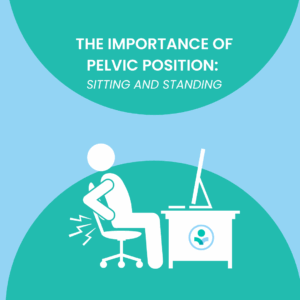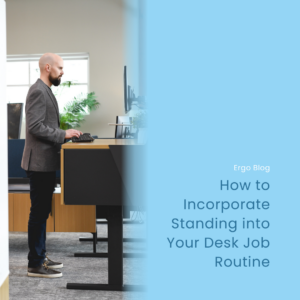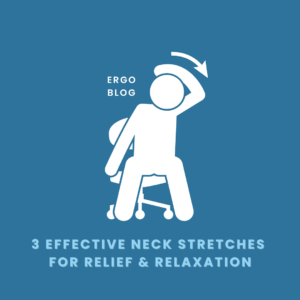Updated: Oct 20, 2022
Shoes Your Battle: Choosing the Best Shoes for You
If you struggle with pain in your feet, knees, or hips, the culprit may be the shoes you’re wearing. Many people don’t realize that their choice of footwear affects their entire body, not just their feet. Wearing supportive shoes is an important aspect of ergonomics because our feet are the foundation of support for our whole body.
If you have a quality pair of shoes that aren’t doing the job they used to, it is time for a replacement. Just like the tires on your car, a pair of shoes loses its tread and must be replaced after so many miles. A typical pair of shoes should last between 400 and 600 miles. This equates to about 4 to 6 months, depending on how often they are worn.
Buying a quality pair of shoes is a worthy investment, but there is not a “one-size-fits-all” solution. Gait, type of activity, and the anatomy of a person’s foot all play a role in determining which shoe will be most comfortable and supportive for you.
How Your Gait Affects What Shoe Is Best for You
A common misconception is that high-quality tennis shoes, regardless of brand or style, are universally good for everyone. The truth is there is no universal best shoe. But there is the best shoe for your foot. A large consideration when choosing the best shoe for your foot is your gait.
Gait, or the way someone walks, is largely affected by the anatomy of your foot. Obviously, one person’s foot is not the same as the next person’s foot, thus one person’s best shoe may not be the next person’s best shoe. It is helpful to see a footwear specialist determine your gait. A footwear specialist will examine how you walk and the arch of your feet to determine whether you walk with neutral pronation, overpronation, or supination. Gait analysis is extremely helpful in finding a shoe that is most compatible with your needs.
What does pronation mean?
Pronation is the term used for how a foot should naturally and normally move while walking or running. Neutral pronation is what is considered “normal” and healthy. In neutral pronation, the foot lands on the outside of the heel first and then rolls inward about 15 percent. This helps absorb the impact and evenly distribute a person’s body’s weight while walking or running. Neutral pronation is most commonly found in people with medium arches. People with neutral pronation and medium arches do best wearing shoes with a mild cushion.
What does overpronation mean?
Overpronation refers to when the foot rolls too far inward or downward while walking or running. This is an abnormal gait that usually occurs in people with flat feet. Overpronation often leads to arch and heel pain due to improper weight distribution. If you have collapsed arches or flat feet and tend to overpronate, it is best to buy a stability shoe or orthotics to help put support under the fallen arch.
What does supination mean?
Supination occurs when the foot rolls outward while walking or running. By improperly distributing body weight to the outer edges of the feet, supination causes excess strain on the feet. This often occurs in people with high arches. A common misconception about having prominent arches is that you need additional arch support, but the best thing for high arches is simply a high cushion shoe. If you find that you would like additional support for your high arches, find insoles designed specifically for high arches. An improperly fitting insole could cause additional supination and pain.
Determining Your Gait
To learn more about your gait, visit a shoe specialist who can point you in the right direction. Or you can do your own gait analysis at home. Find an old newspaper and place it on the ground. Get your feet wet and stand on the newspaper for a couple of seconds. Then, carefully step off the newspaper and observe the imprint left by your wet feet. This will show you whether you have medium, flat, or high arches and can indicate if your gait falls under the category of neutral pronation, overpronation, or supination.
The Best Shoes for Different Types of Arches
The type of arch you have is one of the most important considerations in choosing a comfortably fitting and supportive pair of shoes. If the shoe you are currently wearing has great arch support but just isn’t hitting in the right spot, this could mean you have the wrong size. Having a heel that slips out of a shoe could also mean the wrong size.
As a general rule, flat feet require shoes with more arch support, and medium to high arches require shoes with more cushion. There is no universal best shoe, but there is the best shoe for your foot. This is because of the different types of arches on our feet. This article will dive into the different types of common questions and misconceptions frequently asked and will hopefully answer what shoe might be best for you.
What are the best shoes for standing on concrete 10 hours a day?
A high-quality shoe can go a long way. Depending on your foot type, you might want a supportive shoe or cushion shoe from quality brands like Brooks Running, Hoka, Asics, On Running, or New Balance. Add an anti-fatigue mat to that and your problem should be improved.
What are the best shoes for plantar fasciitis?
Plantar fasciitis is a common cause of heel pain. This condition occurs when the plantar fascia, a band of tissue that connects the heel bone to the toes, becomes stressed and inflamed. Shoes with arch support or plantar fasciitis inserts can help subdue the irritation that occurs from this condition.
What shoes are most compatible with custom orthotics?
If you will be using custom orthotics, the best type of shoe would be a neutral shoe. A neutral shoe is one that has no support but a good cushion. Custom orthotics transform a neutral shoe into a supportive shoe tailored to your needs.
What shoe brands are best for narrow feet?
It can be a struggle to find properly fitting shoes when your feet are extremely narrow. An ill-fitting shoe will cause uncomfortable friction and instability, putting you at risk for injury. Although many brands offer narrow-width options, the best brands for people with narrow feet are Nike, Asics, and On Running, as these brands run on the narrow side in general.
What shoe brands are best for wide feet?
If your feet are on the wide side, you may feel somewhat limited in your shoe options, but there are a few brands that are more friendly to people with wide feet. Hoka, Brooks, and New Balance are designed with extra room in the toe box and generally fit more comfortably on a wider foot, so consider starting there.
What shoe brands have the most lightweight shoes?
If you’re searching for a lightweight shoe, the two brands you want to start with are On Running and Nike. These two brands have the lightest weight shoes available. ASICS uses a proprietary GEL technology which makes their shoes heavier. Other brands, like Brooks and Hoka, are also sometimes heavier due to the dense cushion and support in their shoes.
What are the best fashionable shoes for work with good support?
Wearing comfortable shoes does not mean you have to compromise fashion. For women, there are great options that include Dansko, Taos, Aetrex, Vionic, Ecco, and Olakai. For men, consider Olakai and Ecco. Adding in a low-profile orthotic, such as one by the brand Currex, which has flexible support insoles, to your dress shoe can really make a difference.
Can I make my shoes more comfortable without replacing them?
If you’re on a tight budget right now and replacing your current shoes is not an option, try replacing the insoles. A gel insole can make for an easier break-in period when you are wearing new shoes and can make a great replacement if your current insoles are wearing down. If you have flat feet and need a more supportive shoe, Powerstep, Superfeet, and Currex are just a few of the many great supportive inserts to help an overpronator.
What are the best shoes for foot surgery recovery?
Oofos sandals or Hoka slides are two great footwear options when recovering from foot surgery. Oofos sandals and shoes are designed with great technology that absorbs shock, provides support, and reduces energy excursion while walking. The same holds true with Hoka slides. Both shoes have good cushioning for added comfort when your feet are sore.
Remember, if you have a flat foot you want to support. If you have a high arch, opt for a cushion. Use the charts below as a tool to help you determine which shoes may be best for your situation.
Supportive Shoes for Flat Feet
| Brand | Light Stability | Mild Stability | High Stability | Motion Control (for severe flat feet) |
| Brooks |
Launch GTS/Levitate GTS |
Adrenaline | Glycerin GTS |
Ariel/Addiction |
| Hoka |
N/A |
Arahi | Gaviota |
N/A |
| Asics |
GT-1000 |
GT-2000 | GEL-Kayano |
GT-4000 |
| On Running |
N/A |
Cloudflyer | N/A |
N/A |
| Saucony |
Guide |
Omni | Hurricane |
N/A |
| New Balance |
N/A |
860 | Vongo |
N/A |
Cushioned Shoes for Medium to High Arches
| Brand | Light Cushion | Mild Cushion | High Cushion | Max Cushion |
| Brooks |
Launch/Revel |
Levitate | Ghost |
Glycerin |
| Hoka |
Clifton |
Kawana | Kawana |
Bondi |
| Asics |
NA |
NA | GEL-Cumulus |
GEL-Nimbus |
| On Running |
Cloud/Cloud X |
Cloudflow | Cloudswift |
Cloudstratus/ Cloudmonster |
| Saucony |
NA |
Ride | Triumph |
Freedom |
| New Balance |
890 |
880 | 1080 |
More |
How to Take Care of Your Shoes
We spend hours every day wearing our shoes, and it doesn’t take long before they are in need of a good cleaning. Whatever you do, don’t put them in the washing machine. Doing so will break down the shoe and cut its lifetime in half. Instead, use shoe cleaner and a brush to scrub them clean. You can also use a mixture of baking soda and vinegar to scrub the stains away.
If your shoes need deodorizing, use a shoe deodorizer that kills any bacteria living inside your shoes. Sneaker balls also work great to keep bad smells at bay. Just place them inside your shoes and leave them overnight to do their job. Another option is to sprinkle a little baking soda inside your shoes to absorb any bad smells.
We hope this helps your shoe-buying process and most importantly improves any pain you might have. Also, check out our YouTube video below for a visual representation of the blog!



